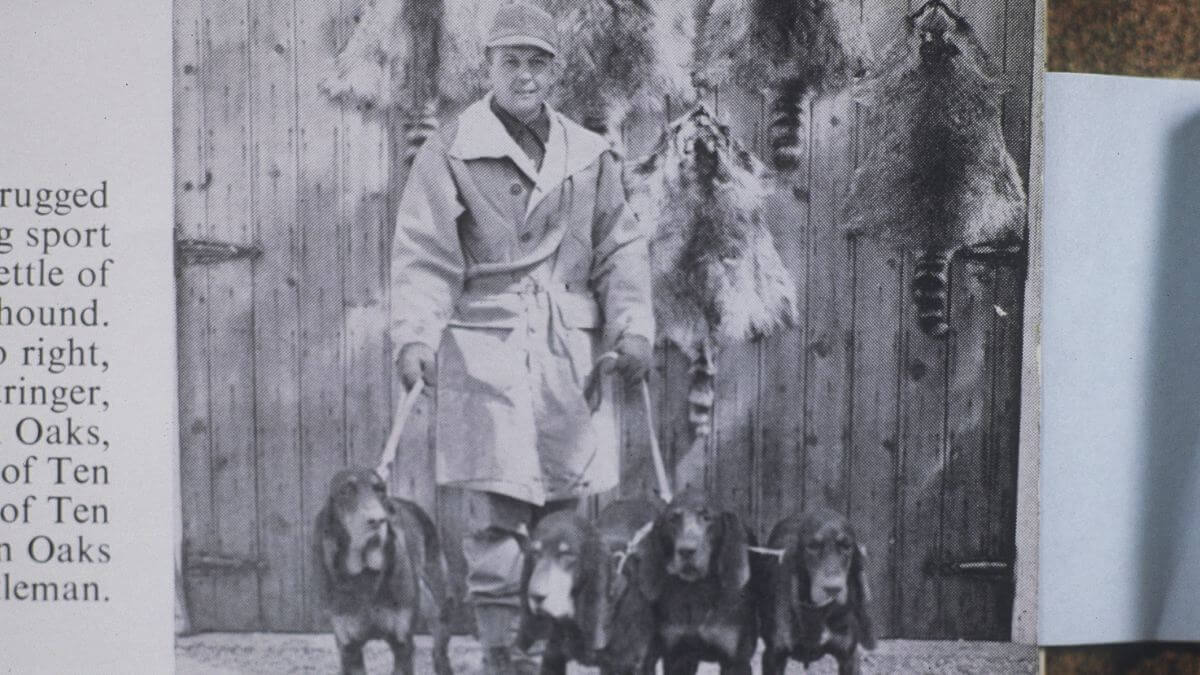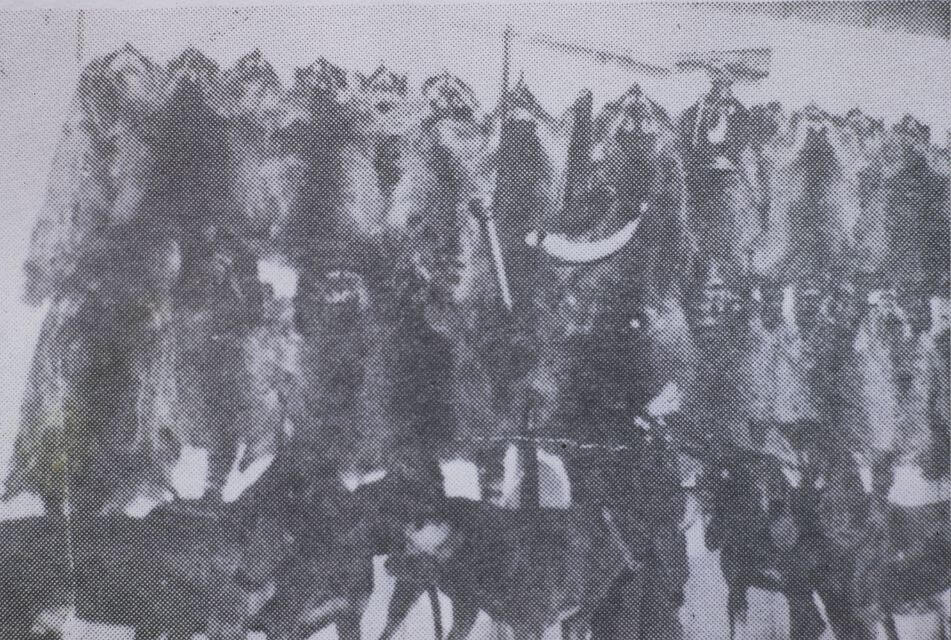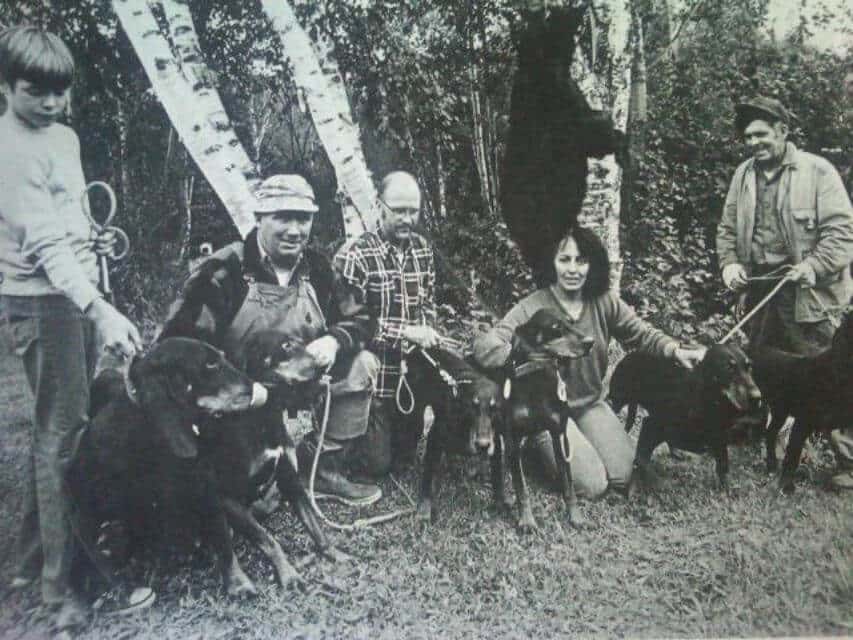
Home » The History of the Black and Tan Coonhound

The Black & Tan Coonhound (B&T) is, in the words of one of our late, great breeders, Don Stringer, “A breed as old as the hills.” The first recognized coonhound breed by the UKC in 1900, the B&T was similarly the first, by far, coonhound breed recognized by the AKC; in 1945. What we do know, or have good reason to believe, is that the classic “Old-Fashioned” Black & Tan has existed in close to his present form since the early part of the 19th century.
While the exact origins of the breed are lost in the mists of time, we know that certain black and tan foxhounds were introduced from Ireland back as early as the late 1600s and that representatives of that king of all French scenthounds, the Grand Bleu de Gascon, were imported in the days following the American Revolution. Indeed, George Washington received Gascon-type hounds as a gift from the Marquis de Lafayette after the Revolution and it is almost certain that others made their way to our shores. The likely addition of the Bloodhound to these hounds resulted in the Black & Tan Coonhound, also referred to in some texts as the “Old Virginia Black & Tan.”

During the early 1800s, a group of settlers made their way over the Alleghenies from Virginia to Marietta, Ohio, and then on to the Darby Plains region of west-central Ohio. Accompanying them on this trip was what was described as a large, long-eared, black and tan hound that the settlers called “Old Glory.” Evidently, Old Glory was held in high regard not only for her beauty but also for her ability to help secure food for the table and keep wolves, panthers, and hostile Native Americans at bay. In short order, the “Old Glory type” was in much demand, and more hounds of this style spread thoughout the Ohio Valley, including Indiana and Kentucky.
In the years leading up to the Civil War, Col. Hayden C. Trigg of Glasgow, Kentucky, maintained a pack of hounds that he described as “those glorious old long-eared, rat-tailed black and tan hounds” that he employed to hunt Grey Fox. In time, the speedier, more open country-loving Red Fox began making inroads into Col. Trigg’s hunt country, and gradually, the large, slower trailing Black & Tans became dispersed in favor of a hotter-nosed, faster, traditional American Foxhound. Indeed, there are still American Foxhounds that carry the Trigg strain and there are special organizations that promote the Trigg hounds over the more prevalent Walker strain. But I digress; one of the traits of our native Grey Fox is its tendency to climb trees. It does not require a great leap of faith to make the connection from being a successful hunter of Grey Fox to hunting other treeing game, namely, Raccoon. Incidentally, when first recognized by the UKC, the breed was known as “The American Black and Tan Coon & Foxhound.” Some members of the breed found favor with hunters in the Northeast and New England where they were used to “cold trail” Red Fox and other predators during the winter months, much as Beagles trail the Cottontail.
By the 1930s, competition coon hunts, called “Nite Hunts,” and the new sport of organized Field Trials began to attract a new breed of enthusiast. The old, slower-trailing Black & Tan suddenly found himself heading down the road to obsolescence. Black & Tan breeders, wishing to breed a more competitive type hound, began breeding for a smaller, racier hound with a much shorter ear. A dedicated group of breeders, headed by the aforementioned Don Stringer (Ten Oaks), William N. Cosner (Maple Hill Farm), and Orville Dunham (Grand Mere), spearheaded a movement dedicated towards preserving the breed in its original state. To this end, they approached the AKC with boxes of breeding records and documented pedigrees. This led to the B&T’s record short span of time spent in the Miscellaneous Class and inclusion into the Hound Group in 1945.

The breed as it exists today is largely unchanged from the hounds we saw 80-plus years ago. Never a popular breed in terms of registration numbers, it has escaped the whims of fancy and style that have so impacted other, more popular, breeds in that span of time. The AKC’s assimilation of UKC-bred stock into our stud book (against the wishes of the Parent Club) approximately 17-18 years ago threatened the integrity of our hounds, but that threat has largely gone unfounded. The AKC Black & Tan Coonhound remains true to his long, distinguished heritage, and while still used to hunt and tree ‘coon, bear, and wildcat, he has found a whole legion of new fans as a gentle and devoted family dog, a striking show dog, and a living, breathing source of genuine Americana.
